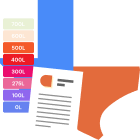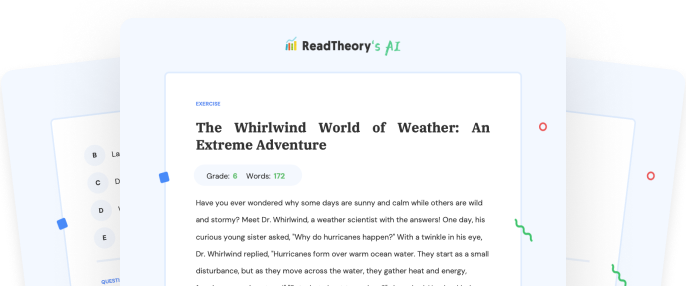Transform Your Teaching
with AI-Powered Worksheets
With ReadTheory’s Instant Worksheet Builder, you can create engaging, grade-appropriate worksheets tailored to your students in minutes. Spark curiosity, save time, and empower critical thinking with AI-powered tools designed for teachers like you.


Metals and Minerals: Their Importance, Properties, and Environmental Impact
Metals and minerals are more than just shiny objects we find in the earth. They are the building blocks of our modern lives, found in everything from the cars we drive to the electronics we can't live without. However, have you ever wondered what makes them so special? It all starts small, at the atomic level. Metals, like iron or copper, have atoms that are willing to share their electrons, creating what we call a 'sea of electrons.' This sharing is what gives metals their notable properties such as conductivity, malleability, and ductility. On the other hand, minerals, like quartz or feldspar, are inorganic compounds with highly ordered atomic structures. These structures give them unique properties such as hardness and crystal forms. However, our dependency on these resources has a price. The extraction of metals and minerals from the earth, known as mining, can cause severe environmental damage. Removing layers of soil disrupts habitats, and the extraction process often leads to water and air pollution. Furthermore, many of these resources are non-renewable, meaning once we've used them, they're gone for good. As we move forward, it's crucial to understand and appreciate these valuable resources' importance and impacts. By promoting sustainable practices, we can ensure that future generations also benefit from metals and minerals, and the earth remains a habitable place for all its diverse life forms.
Question 1
What are the notable properties of metals like iron and copper due to their 'sea of electrons'?
Ductility, malleability, and conductivity
Transparency, malleability, and hardness
Ductility, hardness, and crystal forms
Conductivity, transparency, and malleability
Question 2
What are minerals like quartz and feldspar known for?
Malleability
Conductivity
Hardness
Ductility
Flexibility
Question 3
What is the main environmental issue associated with the extraction of metals and minerals from the earth?
Air and water pollution
Overpopulation
Deforestation
Coral bleaching
Global warming
Question 4
Why are metals and minerals considered as non-renewable resources?
They can be replenished over time
They can be recycled
They are mostly found in the earth's core
Once used, they are gone for good
They are artificially produced
Question 5
What is the meaning of promoting sustainable practices in the context of mining metals and minerals?
Increasing the extraction process to meet demands
Using advanced technology to extract more resources
Exploiting more areas for mining activities
Reducing environmental damage and ensuring the resources last for future generations
 or share via
or share via

Assign the ReadTheory pretest to determine students' reading levels.

Why Teachers Love
Instant Worksheet Builder?

Tailored Content for Every Student
Craft worksheets with passages and multiple-choice questions customized to your chosen topic and grade level, ensuring relevance and engagement.

Save Hours
of Prep Time
Our AI, Lexi, generates complete worksheets—passages, questions, and answers—in minutes, freeing you to focus on teaching, not planning.

Standards-Aligned Learning
Every worksheet is designed to boost reading comprehension and critical thinking, aligning seamlessly with State Standards to help your students shine.
Personalized teaching
for personalized learning
Browse worksheets created and refined by educators using Lexi—your source for inspiration and ready-to-use resources.


ReadTheory is free for Teachers to use.
Join thousands of educators using ReadTheory for free. Sign up today and start creating in just minutes!





